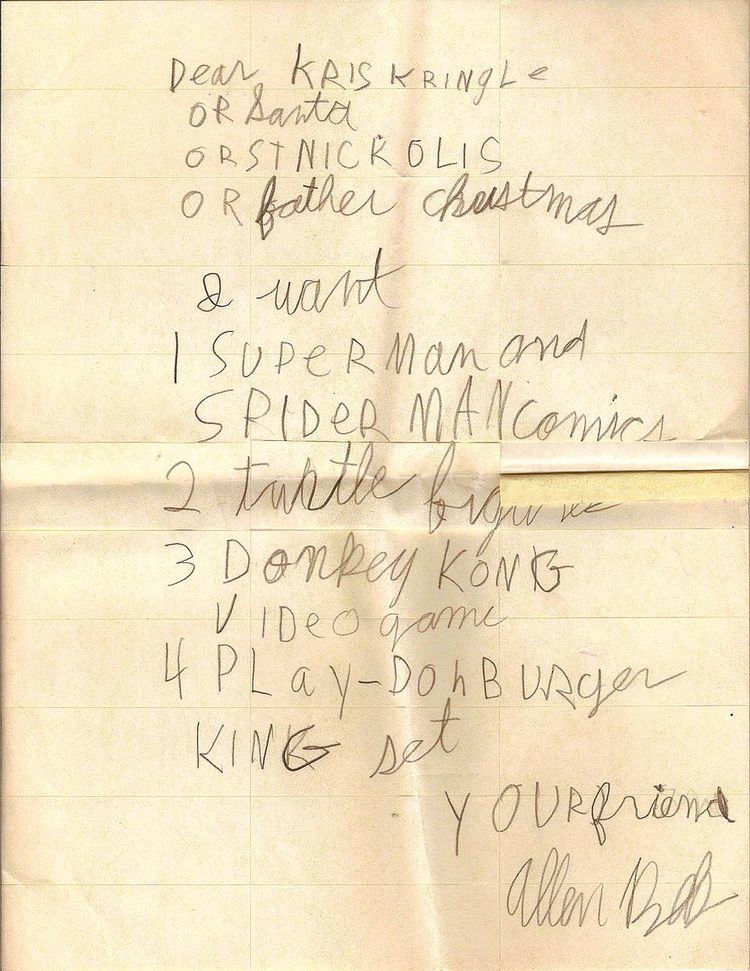 | ||
A wish list or want list is an itemization of goods or services that a person or organization desires. The author may distribute copies of their list to family, friends, and other stakeholders who are likely to purchase gifts for the would-be recipient, or to offer some of the listed items for sale. The goal of a wish list is to facilitate communication between the gift receiver and the gift giver. Wish lists often contain items that a gift purchaser can obtain from a variety of retailers. Some wish lists are specialized for particular purposes or concentrated at individual retailers, such as gift registries (e.g., bridal registries).
Contents
Occasions
In some cultures, people often exchange wish lists before major holidays that include gift giving, such as Christmas and birthdays. Other common occasions for issuing wish lists include baby showers, housewarmings, weddings, and charity drives.
Types
Online
An online wish list typically allows a registered user to create a wish list, add wishes to it and then spread a link to the wish list via email or social media like Facebook and Twitter. Visitors to the published wish list can in most cases comment wishes and reserve them. This adds a collaborative perspective among the viewers that would be much harder to achieve for analog wish lists.
Software users
Software user wish lists are a compilation of user suggestions for requested features. Many enterprise websites and software packages offer users the option to add a "wish" - a suggestion for improvement or change - and to vote on the importance of suggestions supplied by the publisher or author of the website or software, and they attempt to give a quick response to the suggestions. For example Microsoft Visual Studio has a "community" menu, and Facebook has a "suggestions" section.
In many cases, when a company fails to supply such a framework, users create their own lists, in Internet forums or in blogs. When such a list becomes popular, the company must respond to the common requests.
Having software user wish lists has become popular since 2007 when a football gaming community FIFPlay started collecting fans wishlist for Electronic Arts for pre-development of FIFA (video game series) and it has collected over 10,000 ideas and suggestions for FIFA 08.
Stamp collecting
Since most major countries have by now issued from 1,000 to 6,000 types of stamps, it usually difficult for even a single-country collector to remember what is still missing from a stamp collection. Still, most stamps are cheap, and collectors frequently get started by acquiring one or more existing collections, which will include most of the common stamps. Then the problem is to get stamps to "fill the holes"; only a handful of dealers will have a complete stock, and so the want list may take on a life of its own as the collector carries it to stamp shows, mails copies to out-of-town dealers, and so forth, gradually crossing off entries as they are located and purchased.
Topical stamp collectors will also use want lists in their search for stamps that relate to a particular subject.
Specialist collectors may have a want list with a rather different character; instead of looking for one of each major type, they are looking for particular color shades, particular postal markings, uses in particular locations, and so forth. Often these items are intended to become part of an exhibit entered into competition at shows; they may not be particularly rare, but even so it may take years of combing to pick them out of the mass of surviving postal material.
